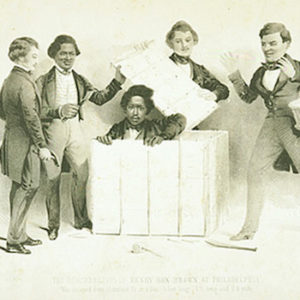
Henry "Box" Brown
*This date celebrates the birth of Henry 'Box' Brown, a Black abolitionist and writer, in 1815.
Brown was born a slave in Louisa County, Virginia. He was separated from his family in 1830 and brought to Richmond to work in a tobacco factory. Brown earned extra money by exceeding his weekly production and soon married a slave washerwoman named Nancy; they had at least three children. He used his wages to pay Nancy’s master for the time she spent caring for their family. But in 1848, Nancy’s master sold her and her children to another slave owner, who sent them to North Carolina.
As Nancy began the customary walk south, shackled to other adult slaves and with her children loaded on a wagon, Brown walked with her for a few miles. He then watched, powerless, as his wife and children were taken from him. Overwhelmed, Brown was determined to escape. He found an ally in a sympathetic white shoemaker named Samuel Smith, who agreed to ship Brown as dry goods to the Philadelphia office of the Pennsylvania Anti-Slavery Society. He paid Smith $84 for his help.
Brown survived the journey and became a well-known speaker for the Anti-Slavery Society,; he wrote his autobiography “Narrative of the Life of Henry Box Brown” in 1851. He then created a panorama called "Mirror of Slavery," a moving scroll of scenes depicting slave life and his unusual escape. The panorama was exhibited in free states of America before he fled to England to avoid the Fugitive Slave Act. In England, Brown’s panorama helped foster anti-slavery sentiment. About 1862, he began performing more light-hearted shows with ventriloquists and singers.
It is unknown if he ever found his family; all that is known of him after 1864 is that he lived in Wales. The date of Henry Brown’s death is also unknown.